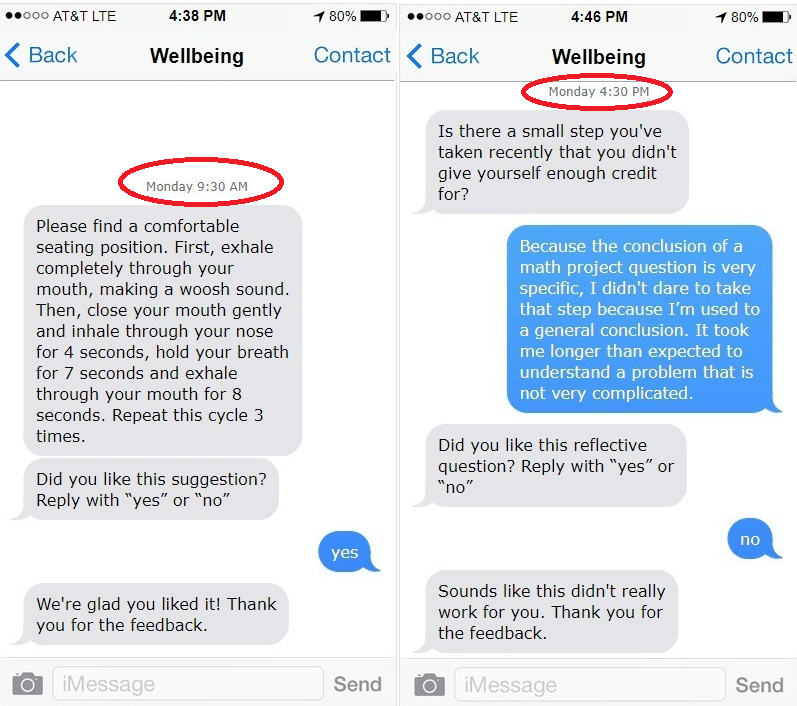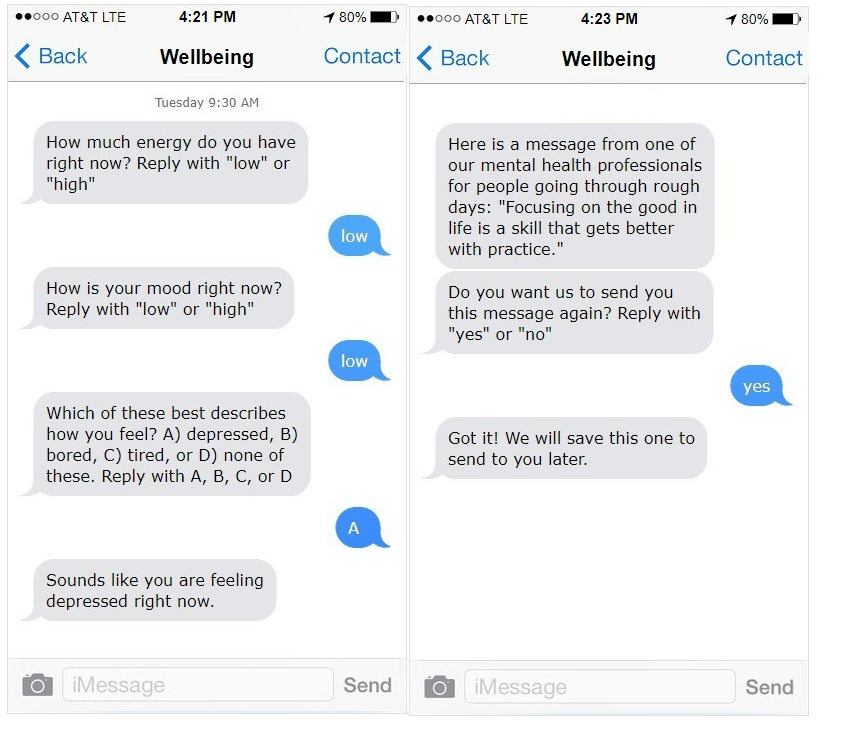When it comes to the expanding realm of digital mental health tools, context matters in delivering support that is timely, appropriate and relevant, Arts & Science computer scientists say.
Push-based tools such as text messages and notifications can allow people to access on-demand resources and strategies for managing their psychological well-being. But users can become frustrated or disengaged when the tools lack a nuanced understanding of their context and needs at a particular time, according to the research team, led by third-year PhD student Ananya Bhattacharjee.
Looking to address this challenge, the team — which also includes PhD student Harsh Kumar and professors Joseph Jay Williams and Alex Mariakakis — investigated the dynamic contextual factors that influence young adults’ experiences when interacting with these tools. The U of T researchers collaborated with colleagues at Northwestern University and Mental Health America, a non-profit organization.

Their work received a Best Paper Award at the recent Association for Computing Machinery (ACM) Conference on Human Factors in Computing Systems (CHI), a premier international conference in human-computer interaction.
Asking for help can be difficult, says Bhattacharjee, and with the onset of the COVID-19 pandemic, many people experienced challenges surrounding mental health. As a result, he wanted to investigate how digital tools and text messaging could be used to provide support, given the ubiquitous nature of smartphone technology.
Using text messaging “enables you to provide psychological well-being support on a much larger scale than was possible before,” he notes.
To determine the contextual factors that influence young adults’ use of digital mental health tools, the team conducted individual interviews and focus group sessions. The resulting insights informed the team’s deployment study in which 42 participants were sent two text messaging dialogues designed to support young adults between the ages of 18 and 25.
One dialogue centred around the role of the recipient’s daily schedule and the other around the recipient’s affective state (i.e., mood and energy level) to observe how these factors impacted their receptivity to the messages.
In the daily schedule dialogue, each sequence started with messages designed to help people manage their stress or negative emotions, such as a brief activity prompt that could be completed within a few minutes, like breathing or mindfulness exercises, and reflective questions that asked participants to reflect on various elements of life, such as their career, relationships and health.
The researchers found participants’ preferences depended on a combination of factors like their availability, social proximity with peers and their emotional state at certain times of day.

In the affective state dialogue, participants received messages that were responsive to an emotion-labelling task in which they self-reported their energy and mood levels. Those who were experiencing a low mood received a short passive supportive message, while participants with a high mood received a suggestion to draft a text message to help someone experiencing a negative emotion.
The researchers found participants generally appreciated messages that asked about and catered to their mood and energy level and found the emotion-labelling task to be helpful, especially in facilitating emotional awareness.

Throughout the study, participants provided a range of feedback about how they could be best supported by messages, particularly around when they would prefer to be engaged in more passive versus active ways.
“What we have seen is that people have diverse and often conflicting needs that are not generally addressed in the existing intervention systems,” says Bhattacharjee.
Participants suggested that message volume, time sensitivity and the amount of effort required to engage in text messaging systems should be adjusted based on each user’s context.
“Often, messaging tools or mental health tools provide generic content,” Bhattacharjee notes. “What we need is personalized support. Different people have different needs, even the same people can have different needs at different times. So, what those tools need to do is try to acknowledge those contexts.”

The team's findings indicate that users' interaction with messages can vary significantly depending on the context. Participants in the study expressed a preference for receiving encouraging messages in the morning and support messages after work hours. They also found passive forms of support helpful during periods of low mood or decreased energy and emphasized the importance of minimizing notifications to prevent feeling overwhelmed during those times.
Bhattacharjee explains that a participant’s social proximity — who they are with at a given moment — also influenced whether they wanted to engage with the tool. In busier social situations, participants wanted to keep things private, and also did not feel they needed extra support.
The team’s research reveals that messaging systems should not only try to send messages at users’ preferred times, but also avoid sending messages at inconvenient times to improve user experiences. Participants warned that receiving even a single message during an exam or an important meeting could significantly decrease their engagement and retention with the tool.
With strategically scheduled reminder messages and ‘snooze’ options, future iterations of these tools could give users a greater sense of control while reducing feelings of being rushed or overwhelmed, the researchers explain. The amount of effort users are willing to exert depends on their context, they note, and passive engagement during periods of low mood or energy can help users maintain a baseline connection to the support system without overwhelming them.
Understanding the role daily schedules play, the team sees promise in integration between text messaging systems and digital calendars, as well as physical activity data gathered from mobile phone sensors.
“The text messaging tool could identify a window of when to provide support and what sort of content it should be providing,” Bhattacharjee says.
The team hopes this work represents a major first step toward the development of user-centred, context-aware digital mental health tools.
“Ultimately, we hope to have a combination of systems or a mega tool, where people can access a range of supports” Bhattacharjee says. “By combining different tools like digital calendars, mobile sensors and other systems, we hope to provide more personalized support.”
“What our work is going toward is providing the right support at the right moment based on an individual’s context,” he says.

